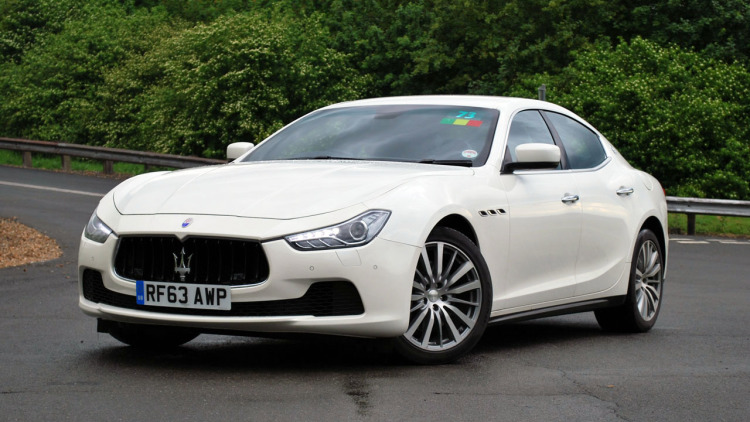The Article About Maserati Ghibli I
Birth of Maserati Ghibli, peculiarities of production
The appearance of Maserati Ghibli (hereainfter – Ghibli) in the market was influenced by a few reasons: Maserati S.p.A. (hereinafter – Maserati) wanted to replace Maserati Mistral model that was in the market since year 1963, moreover it pursued to attract new clients with more powerful and faster representative of “Grand tourer”.
Ghibli debuted in Turin auto-show in year 1966 and turned in production on 1967. It was the direct rival to Ferrari Daytona and Lamborghini Miura.
The interest in Ghibli was high in the market, especially in North America, therefore the production volumes were greater than it was expected. During the year 1967 and 1973 it were manufactured 1170 units of coupe (including SS modification), 125 units of spyder (including SS modification) Ghibli models in total.
Ghibli is Arabian origin word, meaning hot, dust carrying wind, blustering in the deserts of North Africa. Ghibli, being successor of Maserati Mistral model, distinctly highlighted Maserati’s trend on car names – Maserati Bora, Maserati Khamsin models were also denominated as names of winds.
Design, interior
What was so strong in Ghibli bringing Frank Sinatra to buy this car? Why didn’t he choose other rivals being “on the wave” those times? May be he enjoyed the double damper tails, curling up to the left side of the car? Possibly pop-up based and rarely “without necessity” seen front lights? Perhaps the lever of handbrake, sticking out the driver’s seat? Undoubtedly we would receive from Frank Sinatra “in return” for this sarcasm. And his return would be based not only because we gave him a prominence in none of areas of his achievements, but emphasized the “accents” noticeable to frequent classic car lover.
This design of the car was the masterpiece of Giorgetto Giugiaro, which was developed when working at Carrozzeria Ghia & Gariglio Company, at the beginning of his carrier. Notwithstanding the design of Ghibli was one of the first works in this company, even looking from today’s perspective, it was a creation of high professionalism.
Giorgetto Giugiaro didn’t want to hide that powerful Ghibli was driven by front positioned engine, oppositely it highlighted this by designing long, aggressive hood, smooth declining roof line and short tail part of the car. Pop-up front lights gave Ghibli sportsmanship and frond fender grills ensured the image of “sharp” car.
The interior of the car spacious, therefore 2 even tall persons could enjoy the ride in comfort. Although Ghibli had back seats, back space was used for luggage, which was also accessible through the boot. The dashboard was informative and necessary switches were within easy reach for the driver.
A lot of features, in principle intended for luxury cars, were available in Ghibli: air conditioning, power steering, electric windows, and ventilated brake discs.
Technical specifications
V8 engine, achieving 250 kW (330 HP) power, five gears manual or three gears automatic gearbox was installed in Ghibli. The chassis, shortened slightly, was adopted from Maserati 3500GT and Maserati Mexico models. Front suspension was independent, having double wishbones, coil springs and hydraulic shock absorbers. In the rear it was a driving axle, also the suspension had semi-symmetrical leaf springs, hydraulic shock absorbers.
For those times, Ghibli was one of the fastest cars. The car was able to reach 265 km/h speed, what during those days was the “fantasy world”. During the year of production of this car the traffic was not intensive, practically there were no speed limits in Italy as well, therefore the owners of Ghibli could easily enjoy car performance.
Although the acceleration (0-100 km/h) was not very impressive (Ghibli was able to reach 100 km/h in 6,4 s, while Ferrari Daytona did in 5,4 s.), however Ghibli was easily handled comparing with other Italian super cars.
Ghibli also had some weaknesses: pop-up system of front lights often got out of order, other troubles related with electricity were occurring, the car was subject to rusting, after few tens of thousands kilometers the engine required serious maintenance. In fact, it should be mentioned that those kinds of troubles were common in many cars, made in sixties, therefore Ghibli was not “exclusive” in this respect.
Interesting
– The world known owners of Ghibli besides Frank Sinatra were Peter Sellers, Jean-Paul Belmondo, Wilt Chamberlain;
– Even those days it was difficult to “feed” Ghibli: average fuel consumption in urban cycle was ~ 25 liters/ 100km. On purpose the owner could uninterruptedly enjoy driving for a while, Ghibli had 2 fuel tanks, containing 100 liters in total with the filing pipes on both sides of the car.
– In order to meet US requirements, the toggle switches installed in dashboard were replaced by rocker switches in later Ghibli models. The requirement was safety based.
